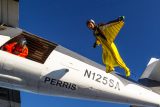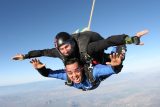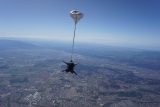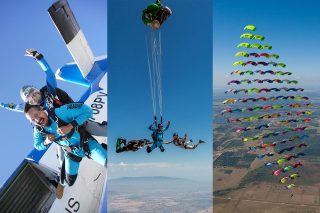
Stay Connected
Get personalized newsletters tailored to your interests! Choose from tandem skydiving, indoor skydiving, fun jumper events, or happenings at the Bombshelter Restaurant and Bar.
Posted by: Skydive Perris
6 years ago
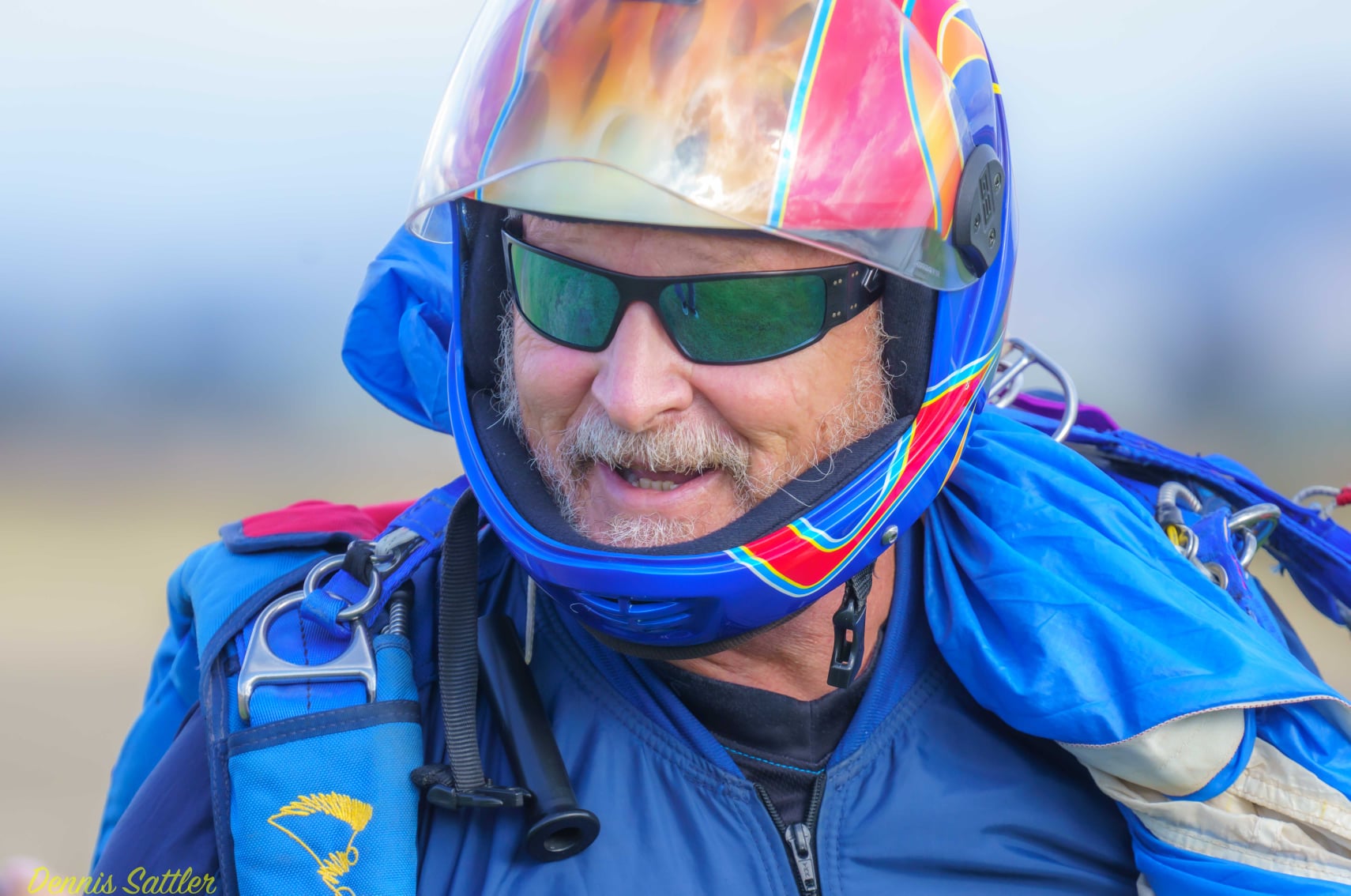
It’s often said in our sport that skydiving is 90% mental and 10% physical. In some ways, that’s great news: You don’t need to be iron-man strong or Instagram-yogi flexible to make it as a skydiver. Skydiving welcomes all body types and pretty much all fitness levels. Indeed, the fiercest demands of the sport are placed squarely on the contents of your skull. Here are some reasons why skydiving is more mental than physical.
To skydive, you need some very strong, very specific mental skills. Skydiving requires your laser focus. It requires you to direct all your energies to the task at hand. It insists that you develop strategies to manage your fear. It requires you to set aside your self-consciousness and enter the coveted “zone.” Ask anyone who’s been doing this for a long time: In a very real way, the physical side of skydiving only seems to exist as a kind of portal to get you into that zone and help you strengthen those mental skills.

When you’re up at the pointy end of competitive skydiving, the physical side does get serious. Like any serious sport, skydiving requires physical strength, flexibility and endurance. That said: Until you get to the point that you’re training for a big world record or angling for a national podium, you won’t have to sweat that much.
At the casual end of the spectrum, solo skydiving only has a few physically exerting moments. For example: If you land “out” (or even just on the far side of the landing zone), you’ll likely sweat a bit in the long tromp back to the packing area with your gear. Packing — especially when it’s hot outside, or when you’re already a little sore from some adventure or another — can be another sweaty undertaking. Working to hit a jump-numbers goal can leave you huffing and puffing if you’re not used to packing ‘em in. This much is evident: Sometimes, you’re gonna sweat.
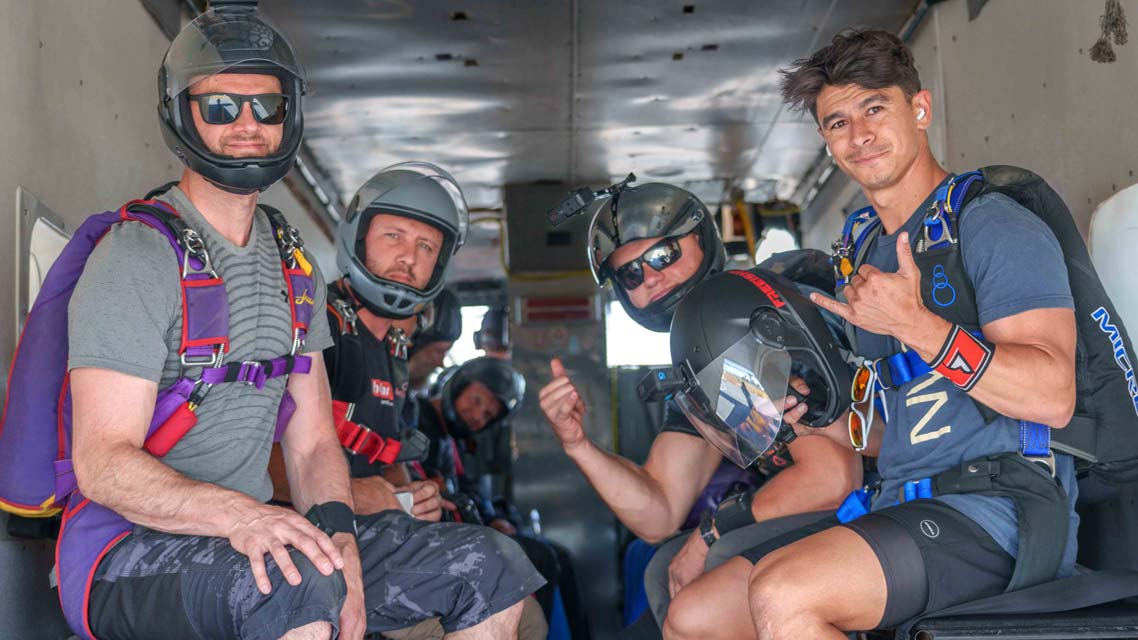
Sure, skydiving makes you sweat sometimes, but it’ll get you doing mental and emotional gymnastics always. Learning about the equipment that gets you up and down takes time and lots of effort. As you do, you’ll be putting together a checklist that includes the details of every piece of gear you come into contact with on any given jump, from the parachute to the airplane. (Spoiler: That list is long.) With each jump, you’ll augment your ability to focus both wide and narrow: on general safety, on exit, on freefall and on the canopy objectives for each successive jump. You’ll need to learn to adjust your stress responses so you’re able to relax and breathe in freefall while performing the mental, physical and teamworking tasks the jump has in store for you. You’ll have to expand your awareness in order to meaningfully protect the safety of everyone that your decisions might affect on the plane, in the sky and on the ground.
Finally, you’ll need to teach yourself — using the strategies that work best for you — how to handle the stimulation of a skydive and react correctly. The struggle of “door fear” is real, especially in the beginning. Overcoming that stimulation and focusing on the task at hand is the aspect of skydiving that will serve you well in your life far beyond the dropzone.
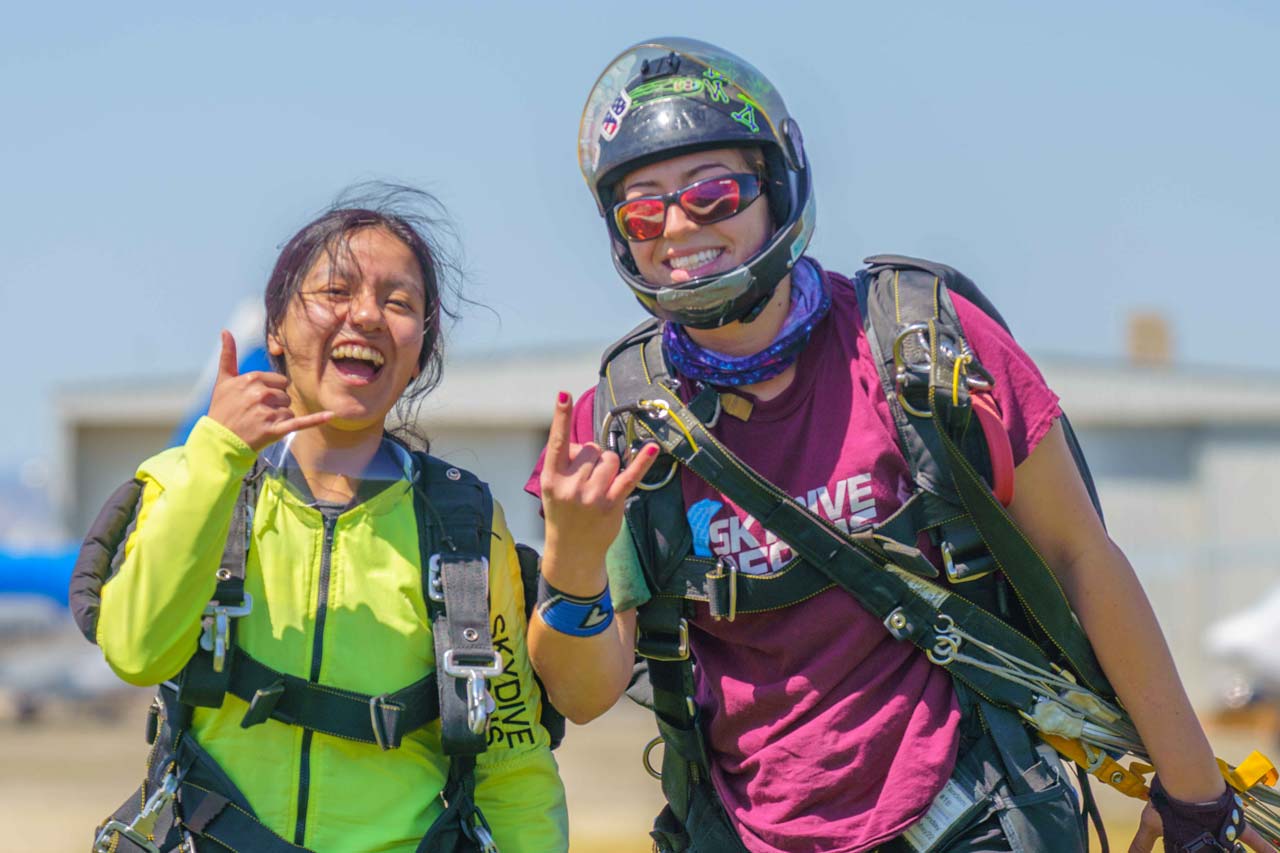
So there you have it: Skydiving is 90% mental and 10% physical. Yeah. But, somehow — as you will most certainly learn as you advance farther and farther in our beloved sport — skydiving manages to be much more than the sum of its parts.
Copyright © 2024, Skydive Perris, All Rights Reserved.
Website Design by Beyond Marketing

| Cookie | Duration | Description |
|---|---|---|
| AWSALBCORS | 7 days | Amazon Web Services set this cookie for load balancing. |
| cookielawinfo-checkbox-advertisement | 1 year | Set by the GDPR Cookie Consent plugin, this cookie records the user consent for the cookies in the "Advertisement" category. |
| cookielawinfo-checkbox-analytics | 11 months | This cookie is set by GDPR Cookie Consent plugin. The cookie is used to store the user consent for the cookies in the category "Analytics". |
| cookielawinfo-checkbox-functional | 11 months | The cookie is set by GDPR cookie consent to record the user consent for the cookies in the category "Functional". |
| cookielawinfo-checkbox-necessary | 11 months | This cookie is set by GDPR Cookie Consent plugin. The cookies is used to store the user consent for the cookies in the category "Necessary". |
| cookielawinfo-checkbox-others | 11 months | This cookie is set by GDPR Cookie Consent plugin. The cookie is used to store the user consent for the cookies in the category "Other. |
| cookielawinfo-checkbox-performance | 11 months | This cookie is set by GDPR Cookie Consent plugin. The cookie is used to store the user consent for the cookies in the category "Performance". |
| CookieLawInfoConsent | 1 year | CookieYes sets this cookie to record the default button state of the corresponding category and the status of CCPA. It works only in coordination with the primary cookie. |
| PHPSESSID | session | This cookie is native to PHP applications. The cookie stores and identifies a user's unique session ID to manage user sessions on the website. The cookie is a session cookie and will be deleted when all the browser windows are closed. |
| viewed_cookie_policy | 11 months | The cookie is set by the GDPR Cookie Consent plugin and is used to store whether or not user has consented to the use of cookies. It does not store any personal data. |
| YII_CSRF_TOKEN | session | This cookie is used a unique token that used in securing forms and other website inputs against XSS attacks. |
| __cf_bm | 1 hour | This cookie, set by Cloudflare, is used to support Cloudflare Bot Management. |
| Cookie | Duration | Description |
|---|---|---|
| currency | session | This cookie is used to store the currency preference of the user. |
| lang | session | LinkedIn sets this cookie to remember a user's language setting. |
| Cookie | Duration | Description |
|---|---|---|
| AWSALB | 7 days | AWSALB is an application load balancer cookie set by Amazon Web Services to map the session to the target. |
| Cookie | Duration | Description |
|---|---|---|
| ahoy_visit | 4 hours | This cookie is set by Powr for analytics measurement. |
| ahoy_visitor | 1 year 1 month 4 days | This cookie is set by Powr for analytics measurement. |
| CONSENT | 2 years | YouTube sets this cookie via embedded YouTube videos and registers anonymous statistical data. |
| vuid | 1 year 1 month 4 days | Vimeo installs this cookie to collect tracking information by setting a unique ID to embed videos on the website. |
| _fbp | 3 months | Facebook sets this cookie to display advertisements when either on Facebook or on a digital platform powered by Facebook advertising after visiting the website. |
| _ga | 1 year 1 month 4 days | Google Analytics sets this cookie to calculate visitor, session and campaign data and track site usage for the site's analytics report. The cookie stores information anonymously and assigns a randomly generated number to recognise unique visitors. |
| _gat_UA-* | 1 minute | Google Analytics sets this cookie for user behaviour tracking. |
| _ga_* | 1 year 1 month 4 days | Google Analytics sets this cookie to store and count page views. |
| _gcl_au | 3 months | Google Tag Manager sets the cookie to experiment advertisement efficiency of websites using their services. |
| _gid | 1 day | Google Analytics sets this cookie to store information on how visitors use a website while also creating an analytics report of the website's performance. Some of the collected data includes the number of visitors, their source, and the pages they visit anonymously. |
| Cookie | Duration | Description |
|---|---|---|
| fr | 3 months | Facebook sets this cookie to show relevant advertisements by tracking user behaviour across the web, on sites with Facebook pixel or Facebook social plugin. |
| IDE | 1 year 24 days | Google DoubleClick IDE cookies store information about how the user uses the website to present them with relevant ads according to the user profile. |
| test_cookie | 15 minutes | doubleclick.net sets this cookie to determine if the user's browser supports cookies. |
| VISITOR_INFO1_LIVE | 6 months | YouTube sets this cookie to measure bandwidth, determining whether the user gets the new or old player interface. |
| YSC | session | Youtube sets this cookie to track the views of embedded videos on Youtube pages. |
| yt-remote-connected-devices | never | YouTube sets this cookie to store the user's video preferences using embedded YouTube videos. |
| yt-remote-device-id | never | YouTube sets this cookie to store the user's video preferences using embedded YouTube videos. |
| yt.innertube::nextId | never | YouTube sets this cookie to register a unique ID to store data on what videos from YouTube the user has seen. |
| yt.innertube::requests | never | YouTube sets this cookie to register a unique ID to store data on what videos from YouTube the user has seen. |
| Cookie | Duration | Description |
|---|---|---|
| ahoy_track | session | No description available. |
| currencyBase | session | No description available. |
| currencySymbol | session | Description is currently not available. |
| landingCatalogURL | session | No description available. |
| test-third-party-cookie | session | Description is currently not available. |
| VISITOR_PRIVACY_METADATA | 6 months | Description is currently not available. |

